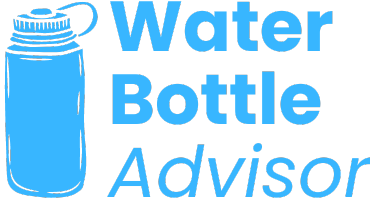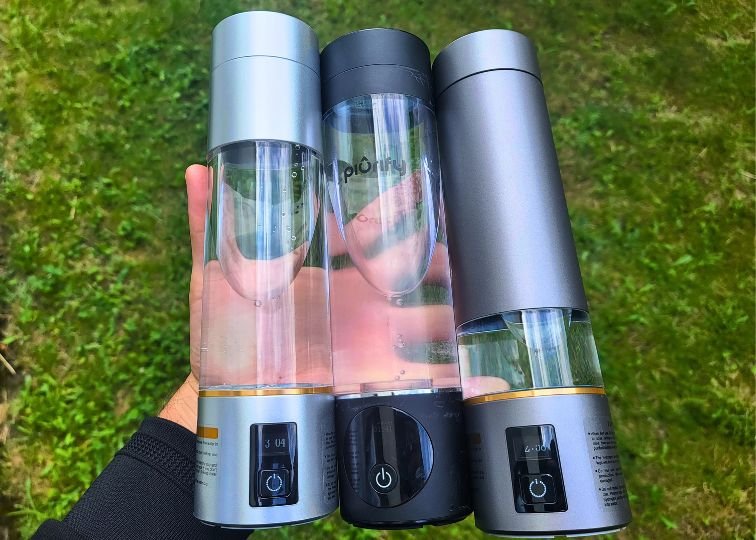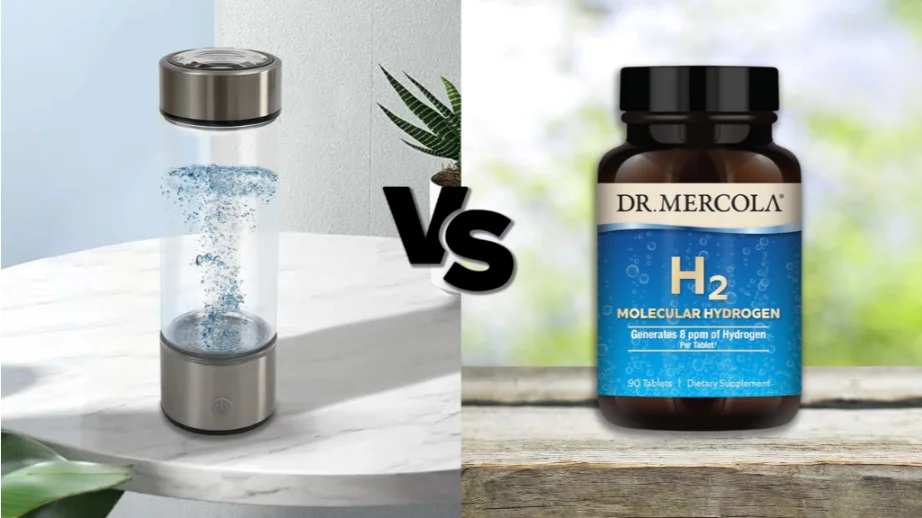Choosing the right hydrogen water bottle is not as straightforward as picking a regular water bottle off the shelf.
With the rising popularity of hydrogen water, there’s a lot to consider, especially since these bottles are usually not cheap. Some sellers or companies might even offer products without any warranty or customer support, which can be a real bummer if something goes wrong.
In this guide, I’ll walk you through seven tips I use to pick the right hydrogen water bottle and tackle the key questions you’re probably wondering about.
#1 – Aim for $100+ Bottles
After trying six different bottles and pitchers, I’ve learned that not all hydrogen water bottles are the same. They vary in shapes and sizes, material quality, durability and hydrogen concentration values, all of which you must consider when choosing your bottle.
I even noticed differences in how the water tasted and how I felt after drinking it. High-end bottles ($100+) seemed to make the water taste fresher and more revitalizing. With cheaper ones, the difference was less noticeable.
It might sound obvious – “you get what you pay for” – but with these devices, it’s especially true. Finding a great deal on a regular reusable bottle is easy; finding one that actually works as a hydrogen water bottle is a whole other story.
That’s probably why I’ve already spent over $1,000 on my hydrogen bottles. Could I try to cut costs and buy some cheaper models for half that sum? Sure. But after reading the reviews on the ultra-cheap options, I realized I’d probably drive myself crazy trying to use them, without actually gaining any of the health benefits I was hoping for.
#2 – See Hydrogen Generation Efficiency & Certificates
If you’re buying a hydrogen water bottle, the point isn’t just to look fancy on your kitchen counter. It’s to actually drink hydrogen-rich water and enjoy its benefits. That’s why the bottle’s hydrogen generation efficiency should be the first thing on your radar.
But how do you figure out if a bottle is any good at producing hydrogen?
Most brands will proudly flaunt a number – how much hydrogen their bottle can generate. If they don’t, that’s your first red flag. These numbers are usually given in parts per million (ppm) or parts per billion (ppb). Technically, it’s just a scale difference, but the idea is simple: the higher the number, the more hydrogen in your water (more on that in a moment).
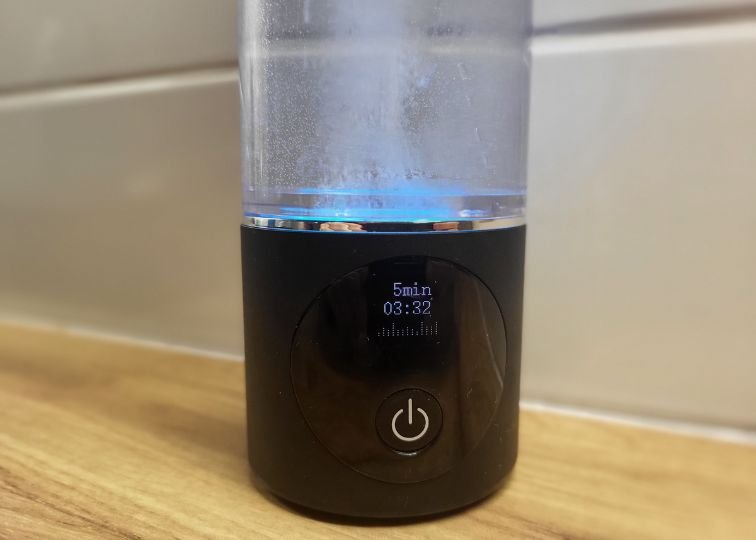
Most bottles fall somewhere between 300 and 3,000 ppb per cycle. Some high-end models boast numbers up to 8,000 ppb. Sounds impressive, right? But the catch is: anyone can slap a high number on a label. I could sell a bottle from China tomorrow and claim it produces a million ppb. Marketing magic – poof, instant credibility.
That’s why certificates matter. The gold standard is the H2 Analytics certificate. If a bottle has one, it means a third-party lab actually tested its hydrogen concentration. This is exactly why my go-to recommendation is the Piurify bottle. I reached out, asked questions, and they happily showed me their lab certificate confirming their claims via chromatography. They even make it publicly available here.
Sure, you could try testing bottles yourself with hydrogen reagent drops from Amazon, like I did. But It’s not very accurate. In my experience, it’s better to stick with brands that are transparent and actually provide certificates.
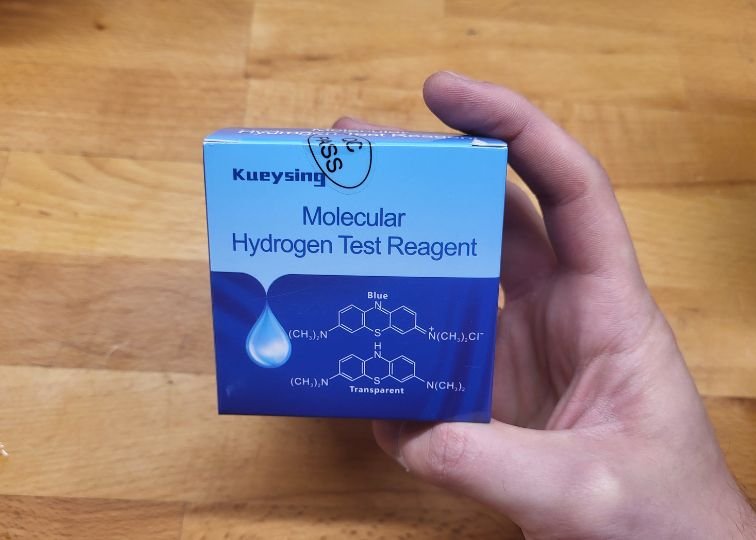
And a final, practical note: there’s limited scientific evidence that drinking water with hydrogen levels above 1,200 ppb gives you extra benefits. My personal rule? Aim for at least 1,000 ppb (or 1 ppm). For example, I use a Piurify hydrogen water pitcher, which tops out around 1,300 ppb, and it’s more than enough.
In short:
- skip the flashy claims,
- check for certificates,
- and don’t obsess over ridiculously high numbers.
#3 – Check Reviews
What a company advertises on their website is not always true in reality. That’s why I usually avoid buying directly from brand websites. I’ve seen countless “five-star” reviews that felt unnatural, almost as if the brand had posted them themselves.
Instead, I tend to buy products, especially hydrogen bottles, on Amazon or other marketplaces, where reviews are more likely to come from unbiased customers. Of course, some reviewers may still receive free products and be a bit biased, but overall, it’s a safer way to gauge quality.
Many reviewers even conduct tests to compare the difference between the advertised ppm values and those actually present in their bottles. It greatly aids in the decision-making process.

However, keep in mind that a large portion of negative reviews often comes from customers who received a bottle with some type of defect. That doesn’t necessarily mean the bottle itself is bad. It just means that particular person was unlucky. I’ve seen dozens of negative reviews for this very reason, even though I personally consider the bottle to be high quality. It’s completely normal for a few units out of hundreds to have minor defects.
When reading reviews, try to be balanced in your judgment. Don’t ignore constructive criticism from customers, but also take one-star reviews with a grain of salt, especially those from people frustrated that their bottle arrived with a defect.
Oh, and try to steer clear of Reddit. Google loves ranking Reddit posts these days, so you’ll probably run into them. In my experience, you usually find one of two things: people who hate everything and mock anyone daring to try something innovative (like a hydrogen water bottle) or bots posting biased comments about one brand or another.
After trying to educate myself on a product through Reddit, I walked away with nothing but a headache.
#4 – Tritan is Okay
Over 95% of hydrogen water bottles you’ll find are made from a material called Tritan.
You probably try to avoid plastics like the plague. I’m right there with you. I test all kinds of health gadgets, and cheap plastic is always on my “hard pass” list.
But Tritan is different. I’ve used a ton of bottles made from it, and I trust it completely. Chances are you’ve used it too – Nalgene bottles are a classic example. I’ve gone down the research rabbit hole, and I can’t find a solid reason to avoid Tritan entirely. It’s BPA-free, FDA-approved, ultra-lightweight, and durable. Perfect for hiking, backpacking, or just schlepping it around the office.
I have a collection of 50+ bottles, and while stainless steel or glass ones sometimes fail on me, my Tritan bottles just keep going year after year.
Sure, some studies suggest that under extreme heat or stress, plastics (including Tritan) could release trace chemicals. But for everyday use (room temperature or cold water), it’s widely considered safe. I personally avoid the dishwasher and clean mine by hand, which is hardly a burden.
Glass is another option. It’s gorgeous, keeps water pure, and won’t mess with taste. But if you’re using it outdoors, glass is a nightmare waiting to happen. I don’t even own a hydrogen glass bottle yet, but I have a few regular reusable glass bottles and I broke two of them this year alone, despite protective sleeves and “durable” borosilicate glass.
#5 – Think About Portability
For me, portability isn’t negotiable. I take my hydrogen bottles to work, on short trips, and sometimes overnight, so they have to travel well. A diameter of less than 3 inches is usually perfect – small enough to slip into tight spots like my car cup holder.
Ironically, most of my hydrogen bottles have the opposite problem – they’re too small, wobbling around and occasionally trying to escape from their cup holders. My solution? A $15 adjustable cup holder like this one. Simple, cheap, and surprisingly life-changing. I’d recommend it not just for hydrogen bottles, but for any bottle you own (or plan to own).
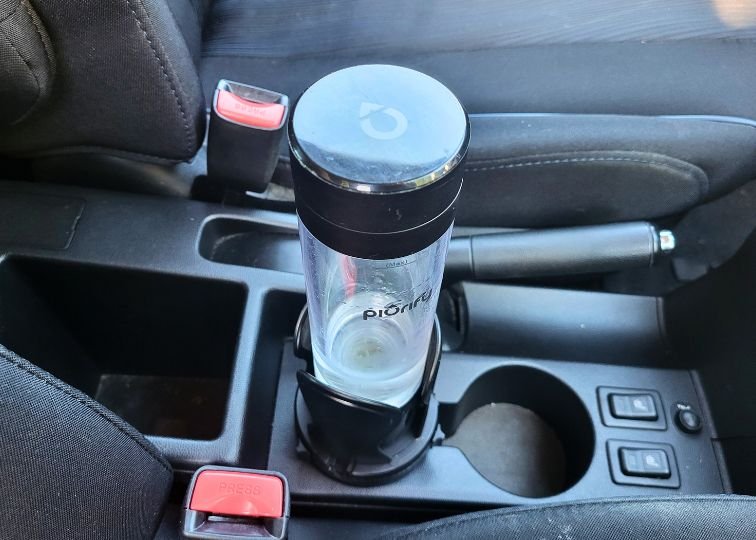
Weight is the next piece of the puzzle. Most hydrogen bottles tip the scales at just 10–15 ounces. Light, easy, and effortless to carry. Tritan plastic deserves a round of applause here. Imagine a stainless steel hydrogen bottle with all its electronics. It would probably weigh three pounds, and you’d need a gym membership just to lug it around.
Honestly, most hydrogen water bottles are pretty portable by design. But it’s still worth checking, especially if you’re someone who likes their bag feather-light. I’ve even seen hydrogen jugs with a 64-ounce capacity. Cool for a home setup, maybe, but try slipping that in your backpack and watch it take over your life.
#6 – Get Used to Small Capacity
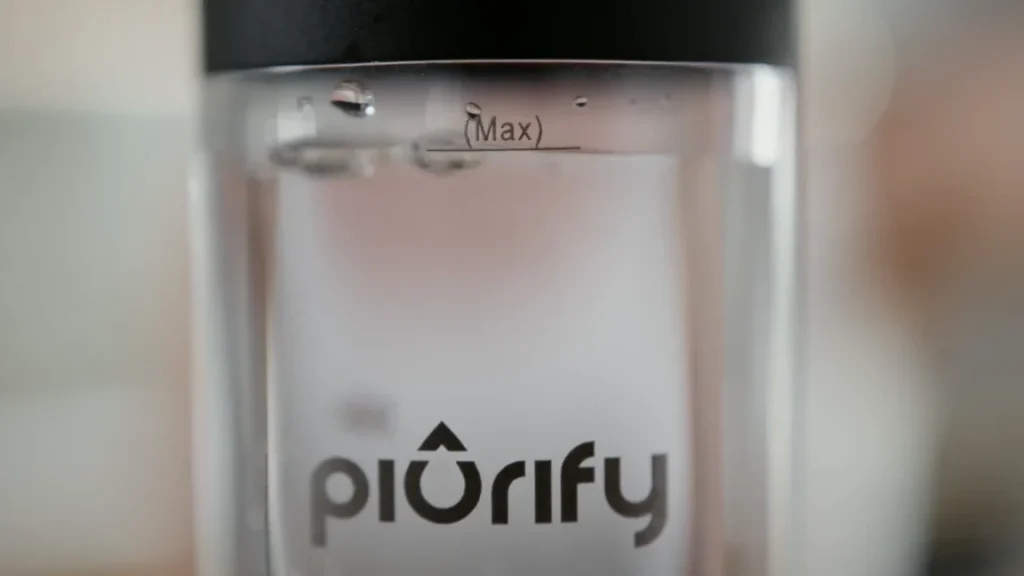
The capacity is kind of the Achilles’ heel for hydrogen water bottles. That’s because almost all of them have a pretty small capacity, usually between 8 to 14 ounces, which is the equivalent to one or two cups of water. Going for anything less than 8 oz. is basically buying a small cup.
You might be wondering why they don’t just make bigger bottles, like 32 ounces or even 64 ounces. Well, it all comes down to cost. Even with the smaller sizes, these bottles are not cheap. Making bigger ones would make the price go through the roof!
However, if you’re mostly at the office or home, where you can easily refill your bottle, then the smaller size might not bother you. I refill mine 5-6 times a day, which conveniently doubles as an excuse for a quick office breather.
#7 – Lifetime Warranty Is a Green Flag
A good warranty can tell you a lot about what a company thinks of their own products.
For me, a brand that offers a lifetime warranty jumps straight to the top of my list, especially for products like hydrogen water bottles, which are usually a significant investment.
It’s like they’re saying, “We know our bottles are fantastic, and we’re not afraid to back that up”. It gives me a lot of confidence in making my purchase.
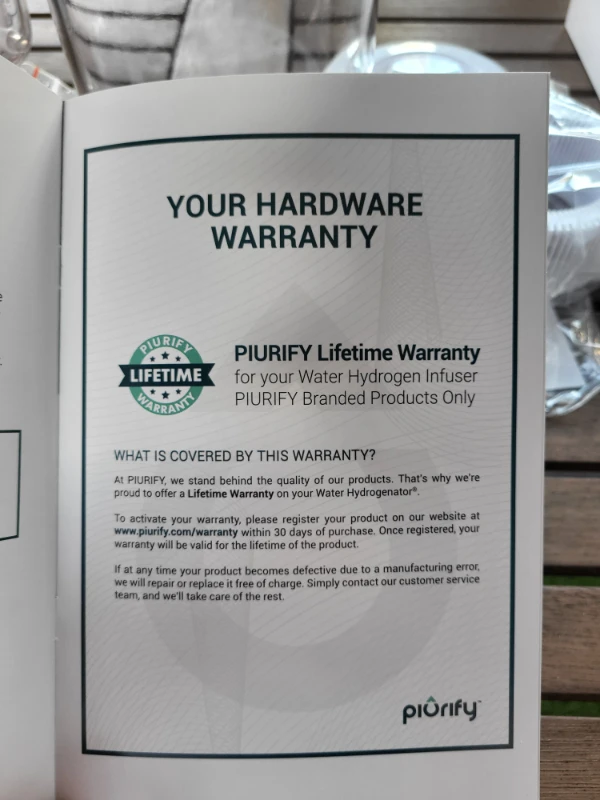
I’ve also seen warranties that last 1 or 2 years. These are still nice to have and they show that the company stands behind their products, at least for a reasonable amount of time.
On the flip side, I steer clear of companies that don’t offer any warranty at all. To me, it’s a big red flag. These are often sellers on Amazon pushing overpriced bottles that really aren’t up to the task.
Who Makes the Best Hydrogen Water Bottle?
From my experience, Piurify really sets the bar for hydrogen water bottles. They’re an American company based in Delaware, and I’ve had nothing but smooth sailing with them. I own three of their products: a hydrogen water bottle, a hydrogen water pitcher, and an electric water filter. Suffice it to say, they see daily action – not just by me, but by my whole family.
What makes Piurify stand out?
First off, their customer support is top-notch, which is extremely important in the hydrogen water bottles market. I’ve read many negative reviews about other brands that were unresponsive when customers needed to replace their bottle or had product-related questions.

Another thing I love about Piurify is the quality and uniqueness of their bottles. Since there aren’t many big names in the hydrogen water bottle market, finding a good one can be hit or miss. Search for “hydrogen water bottle” on Amazon, and you’ll be greeted by dozens of nearly identical designs, all shamelessly copying each other. When I first started shopping, Piurify immediately stood out – and looking back, I’m glad I went with it.
In fact, their Piurify Hydrogenator bottle tops our ranking of the best hydrogen water bottles.
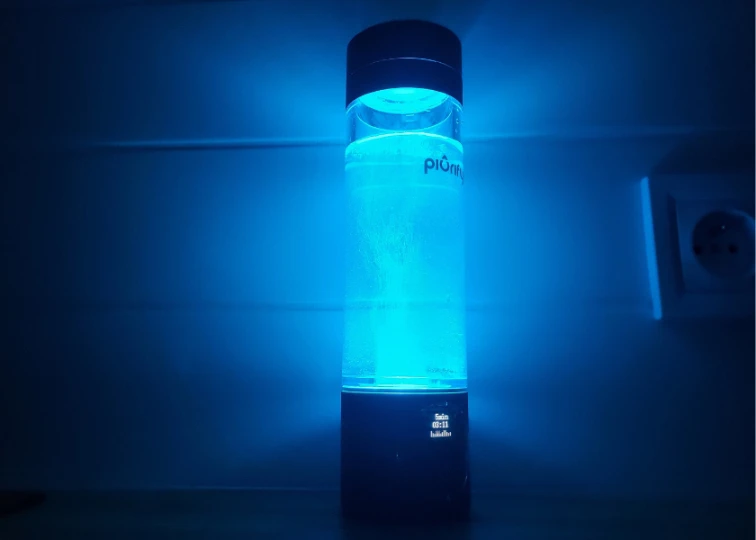
Are Any Hydrogen Water Bottles Made in the USA?
Finding a hydrogen water bottle not made in China is practically impossible. But some companies are based in the U.S. and handle the design, testing, and quality control here, while manufacturing overseas. That’s what brands like Piurify (Delaware) and LevelUp Way (Florida) do. There’s also Ocemida, a Canadian brand I have my eye on for future shopping.
Even though the bottles themselves aren’t built stateside, having a U.S.-based company testing and approving them is still a step in the right direction. It shows there’s actual care behind the product. Someone is paying attention to quality and making sure it meets real standards, not just marketing hype.
This isn’t unique to hydrogen bottles. Popular reusable water bottle brands like Hydro Flask or Owala are manufactured in China, too. Out of my entire collection, 95% came from China. I’ve found only three “unicorns” made in the U.S. – Nalgene, Tervis, and 50 Strong.
So yes, domestic manufacturing is rare, but paying attention to where the brand is based and how it tests its products can make a big difference in reliability and peace of mind.
Conclusion
It can be pretty overwhelming trying to figure out which hydrogen water bottle is the right choice for you.
From my own experience, I’d suggest staying away from any hydrogen water bottle that’s cheaper than $100. It might seem like a good deal at first, but chances are, the quality just won’t be there.
Instead, focus on key aspects like durability, material, portability, hydrogen concentration values, capacity, reviews, and warranty. These factors will help you find a bottle that’s not just trendy but also reliable and worth every penny.
Still feeling stuck? Check out my guide on the best hydrogen water bottles where I compare the top options I’ve personally tried. It’s a great place to start if you want a closer look at which bottles really deliver on their promises.

Jeremiah Kowalski
Hey there! I’m Jeremiah, the guy behind WaterBottleAdvisor.com. I used to have a bad habit of guzzling sodas while working remotely, but thanks to reusable water bottles, I’ve turned my hydration game around. After testing over 50 bottles, I’m here to help you find the perfect one to make staying hydrated a joy, not a chore. When I’m not reviewing bottles, you’ll likely find me scaling steep trails around the world, trusty water bottle in hand.
